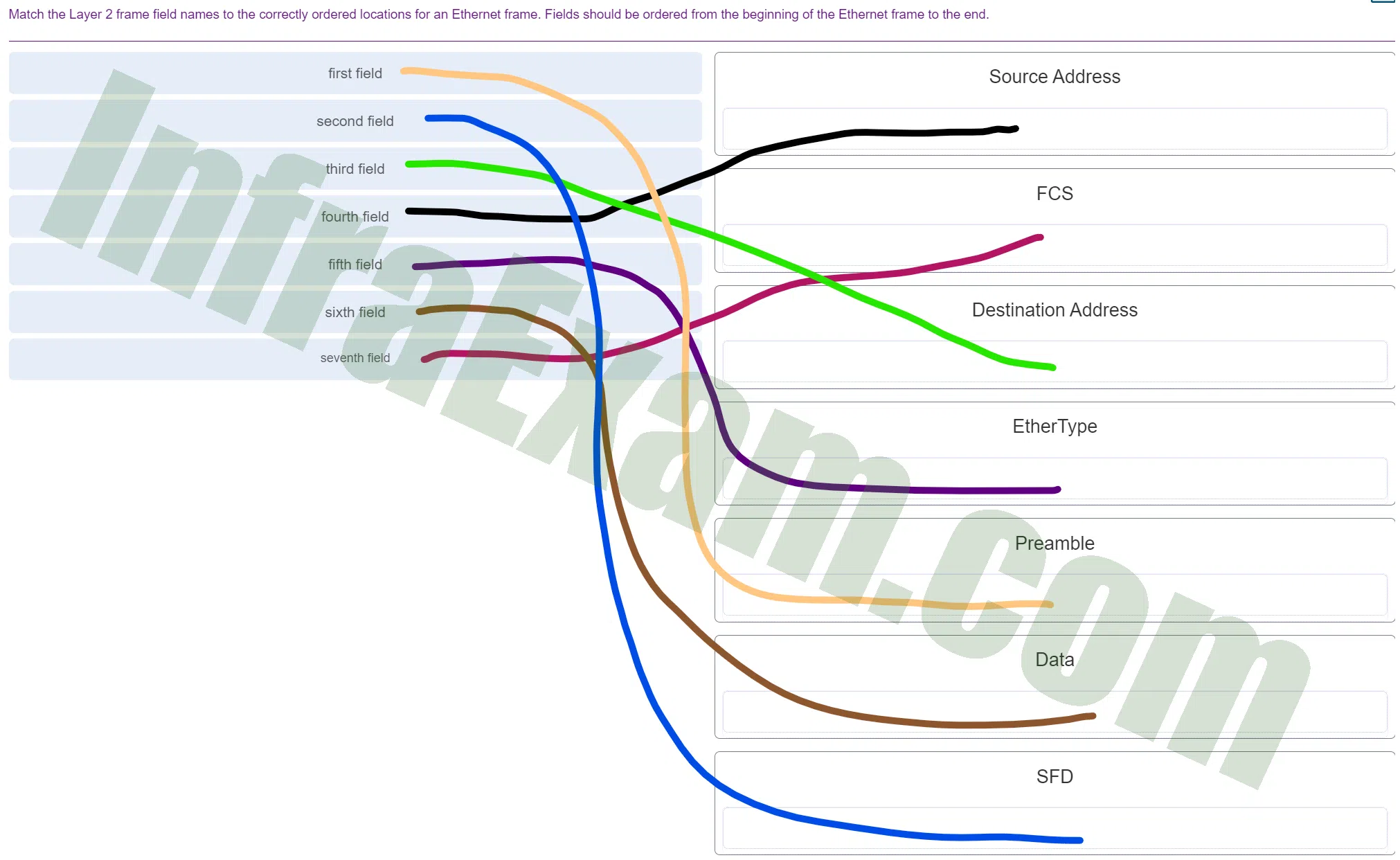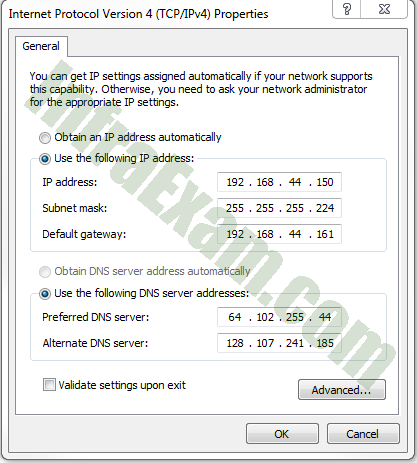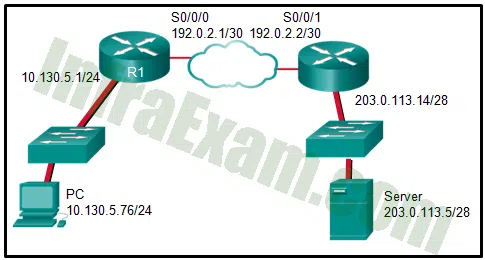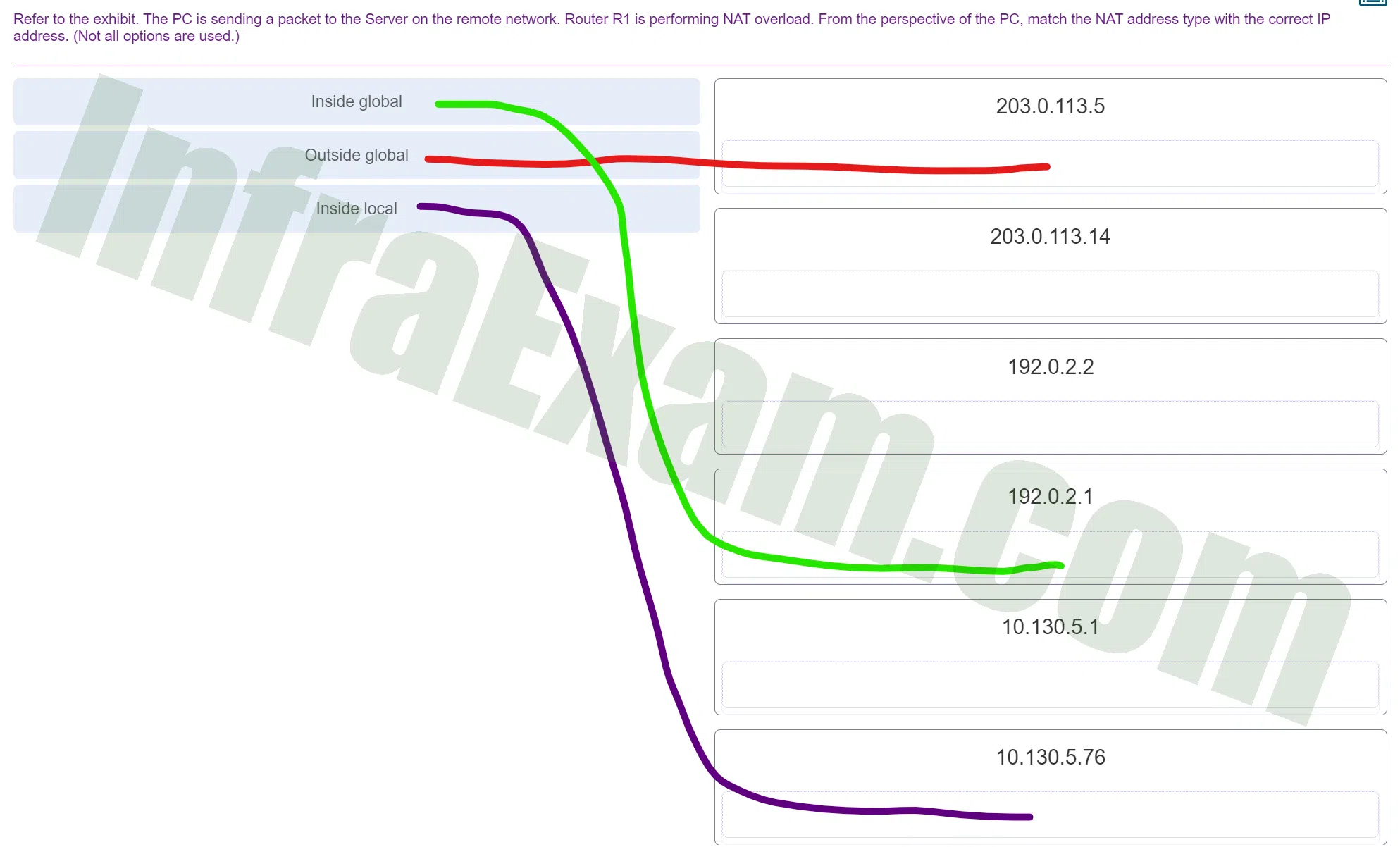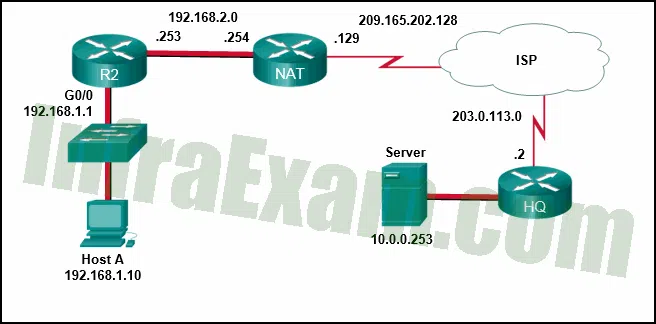DevNet Associate (Version 1.0) – DevNet Associate 1.01 Module 5 Exam Answers 2025 Full 100%
DevNet Associate (Version 1.0) – DevNet Associate 1.01 Module 5 Exam Answers Full 100% 2025
This is a collection of Cisco NetAcad DevNet Associate (Version 1.0), DevNet Associate 1.01, and DEVASC 1.01 for Module 5 Exam Answers Full 100% in 2025. Our team expert has made this series for putting all on one page to be easy to navigate and learn. This DevNet Associate module 5 exam answer is for the Cisco Netacad learning platform. Review all questions and answers before you take the exam to get a full mark of 100%.
| DevNet - DEVASC 1.0 | |
| Final Exam Answers | |
| This Modules 5 | |
| Modules 5 Exam Answers | Online Test |
| Next Modules 6 | |
| Modules 6 Exam Answers | Online Test |
DevNet Associate 1.01 – Module 5: Network Fundamentals Exam Answers Full 100% 2025
-
Match the OSI layer to the layer number. (Not all options are used.)
DevNet Associate 1.01 Module 5 Exam Answers 001 - 7 ==> application layer
- 6 ==> presentation layer
- 5 ==> session layer
- 4 ==> transport layer
- 3 ==> network layer
- 2 ==> data link layer
- 1 ==> physical layer
Answers Explanation & Hint: The network access layer and the internet layer are part of the TCP/IP protocol suite.
-
Which two OSI model layers have the same functionality as two layers of the TCP/IP model? (Choose two.)
- data link
- network
- physical
- session
- transport
Answers Explanation & Hint: The OSI transport layer is functionally equivalent to the TCP/IP transport layer, and the OSI network layer is equivalent to the TCP/IP internet layer. The OSI data link and physical layers together are equivalent to the TCP/IP network access layer. The OSI session layer (with the presentation layer) is included within the TCP/IP application layer.
-
In what two situations would UDP be the preferred transport protocol over TCP? (Choose two.)
- when applications need to guarantee that a packet arrives intact, in sequence, and unduplicated
- when a faster delivery mechanism is needed
- when delivery overhead is not an issue
- when applications do not need to guarantee delivery of the data
- when destination port numbers are dynamic
Answers Explanation & Hint: UDP is a stateless protocol, which means that neither device on either end of the conversation must keep track of the conversation. As a stateless protocol, UDP is used as the Layer 4 protocol for applications that need speedy (best-effort) delivery. An example of such traffic is the transport of digitized voice or video.
-
What will a host on an Ethernet network do if it receives a frame with a unicast destination MAC address that does not match its own MAC address?
- It will discard the frame.
- It will forward the frame to the next host.
- It will remove the frame from the media.
- It will strip off the data-link frame to check the destination IP address.
Answers Explanation & Hint: In an Ethernet network, each NIC in the network checks every arriving frame to see if the destination MAC address in the frame matches its own MAC address. If there is no match, the device discards the frame. If there is a match, the NIC passes the frame up to the next OSI layer.
-
Match the Layer 2 frame field names to the correctly ordered locations for an Ethernet frame. Fields should be ordered from the beginning of the Ethernet frame to the end.
DevNet Associate 1.01 Module 5 Exam Answers 002 - first field ==> Preamble
- second field ==> SFD
- third field ==> Destination Address
- fourth field ==> Source Address
- fifth field ==> EtherType
- sixth field ==> Data
- seventh field ==> FCS
Answers Explanation & Hint: The Ethernet frame contains seven fields. In order these fields are: preamble, SFD, destination address, source address, type, data, and FCS.
-
A device has an IPv6 address listed as 2001:0DB8:75a3:0214:0607:1234:aa10:ba01. What is the interface ID of the device?
- 2001:0DB8:75a3
- 0607:1234:aa10:ba01
- 2001:0DB8
- ba01
Answers Explanation & Hint: An IPv6 address comprises 128 bits represented as eight blocks of four hexadecimal digits. The last four blocks of the address represent the interface ID and is controlled by the administrator.
-
What type of address is 01-00-5E-0A-00-02?
- an address that reaches every host inside a local subnet
- an address that reaches one specific host
- an address that reaches every host in the network
- an address that reaches a specific group of hosts
Answers Explanation & Hint: The multicast MAC address is a special value that begins with 01-00-5E in hexadecimal. It allows a source device to send a packet to a group of devices.
-
Consider the following routing table entry for R1:
D 10.1.1.0/24 [90/2170112] via 209.165.200.226, 00:00:05, Serial0/0/0
What is the significance of the Serial0/0/0?
- It is the interface on R1 used to send data that is destined for 10.1.1.0/24.
- It is the R1 interface through which the EIGRP update was learned.
- It is the interface on the final destination router that is directly connected to the 10.1.1.0/24 network.
- It is the interface on the next-hop router when the destination IP address is on the 10.1.1.0/24 network.
Answers Explanation & Hint: The Serial0/0/0 indicates the outgoing interface on R1 that is used to send packets for the 10.1.1.0/24 destination network.
-
Refer to the exhibit. A computer that is configured with the IPv4 address as shown in the exhibit is unable to access the internet. What is the problem?
DevNet Associate 1.01 Module 5 Exam Answers 03 - The settings were not validated.
- The gateway address is in the wrong subnet.
- The IP address is a network address.
- The IP address is a broadcast address.
Answers Explanation & Hint: The subnet mask of 255.255.255.224 identifies the network of 192.168.44.128. The usable range for the network is 192.168.44.129 through 192.168.44.158. The default gateway address of 192.168.44.161 exists on a separate network from the PC it is configured on.
-
A high school in New York (school A) is using videoconferencing technology to establish student interactions with another high school (school B) in Russia. The videoconferencing is conducted between two end devices through the Internet. The network administrator of school A configures the end device with the IP address 209.165.201.10. The administrator sends a request for the IP address for the end device in school B and the response is 192.168.25.10. Neither school is using a VPN. The administrator knows immediately that this IP will not work. Why?
- This is a loopback address.
- This is a link-local address.
- This is a private IP address.
- There is an IP address conflict.
Answers Explanation & Hint: The IP address 192.168.25.10 is an IPv4 private address. This address will not be routed over the Internet, so school A will not be able to reach school B. Because the address is a private one, it can be used freely on an internal network. As long as no two devices on the internal network are assigned the same private IP, there is no IP conflict issue. Devices that are assigned a private IP will need to use NAT in order to communicate over the Internet.
-
What is one advantage of using the cut-through switching method instead of the store-and-forward switching method?
- has a positive impact on bandwidth by dropping most of the invalid frames
- makes a fast forwarding decision based on the source MAC address of the frame
- has a lower latency appropriate for high-performance computing applications
- provides the flexibility to support any mix of Ethernet speeds
Answers Explanation & Hint: Cut-through switching provides lower latency switching for high-performance computing (HPC) applications. Cut-through switching allows more invalid frames to cross the network than store-and-forward switching. The cut-through switching method can make a forwarding decision as soon as it looks up the destination MAC address of the frame.
-
Refer to the exhibit. The PC is sending a packet to the Server on the remote network. Router R1 is performing NAT overload. From the perspective of the PC, match the NAT address type with the correct IP address. (Not all options are used.)
DevNet Associate 1.01 Module 5 Exam Answers 01 DevNet Associate 1.01 Module 5 Exam Answers 003 - Inside global ==> 192.0.2.1
- Outside global ==> 203.0.113.5
- Inside local ==> 10.130.5.76
Answers Explanation & Hint: The inside local address is the private IP address of the source or the PC in this instance. The inside global address is the translated address of the source or the address as seen by the outside device. Since the PC is using the outside address of the R1 router, the inside global address is 192.0.2.1. The outside addressing is simply the address of the server or 203.0.113.5.
-
Refer to the exhibit. An organization is using static NAT to translate the private IP address of Host A to a single public IP address leased from the ISP. Which address is the inside global address of Host A?
DevNet Associate 1.01 Module 5 Exam Answers 02 - 209.165.202.129
- 203.0.113.2
- 192.168.2.253
- 192.168.1.1
- 192.168.1.10
Answers Explanation & Hint: There are four NAT address types. Listed below are the four types from the perspective of Host A behind the NAT device:Inside local: 192.168.1.10
Inside global: 209.165.202.128
Outside local: 10.0.0.253
Outside global: 203.0.113.2
-
What IPv4-related DNS record type is used by a DNS server in response to a host requesting for a web server address via the URL?
- A record
- NS record
- MX record
- AAAA record
Answers Explanation & Hint: A DNS server uses an A record type for an IPv4 end device address. The AAAA record is for an IPv6 end device address. The MX record is used to map the domain name to mail exchange servers. The NS record indicates the authoritative name server.
-
What command can a technician use on a computer to see if DNS is functioning properly?
- nslookup
- ipconfig
- net share
- net use
Answers Explanation & Hint: The nslookup command can be used to test DNS functionality.
-
Which solution improves web response time by deploying multiple web servers and DNS servers?
- sharding
- memcaching
- load balancing
- distributed databases
Answers Explanation & Hint: Maintaining availability is the primary concern for companies working with big data. Some solutions to improve the availability include the following:
- Load Balancing – deploying multiple web servers and DNS servers to respond to requests simultaneously
- Distributed Databases – improving database access speed and demands
- Memcaching – offloading demand on database servers by keeping frequently requested data available in memory for fast access
- Sharding – partitioning a large relational database across multiple servers to improve search speed
-
What is the function of the Nslookup utility?
- to manually force a client to send a DHCP request
- to view the network settings on a host
- to manually query the name servers to resolve a given host name
- to display all cached DNS entries on a host
Answers Explanation & Hint: Nslookup is a command-line utility that is used to send a query to DNS servers to resolve a specific host name to an IP address.
-
What is the common term given to SNMP log messages that are generated by network devices and sent to the SNMP server?
- traps
- auditing
- warnings
- acknowledgments
Answers Explanation & Hint: Network devices being monitored by the SNMP protocol can be configured to generate log messages that are sent to an SNMP server. The log messages, also called traps, contain all type of information from simple status reports to complex urgent conditions that require immediate attention.
| DevNet - DEVASC 1.0 | |
| Final Exam Answers | |
| This Modules 5 | |
| Modules 5 Exam Answers | Online Test |
| Next Modules 6 | |
| Modules 6 Exam Answers | Online Test |

